History & Diaspora of Ghana
The area now known as Ghana has a rich history of great kingdoms yet also suffered tragic human misery and colonial oppression. Modern Ghana was the first country in Africa to achieve independence, was a leader in the Pan-Africa movement, and has blossomed into today's safe and stable democracy.
Brief History of Ghana
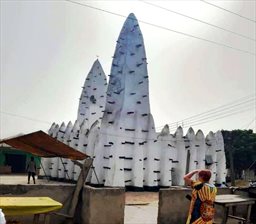
|
ANCIENT GHANA
By the 4th century, the land that is now Ghana was a crossroads of trade routes traversing the Sahara, connecting the interior of West Africa with the Mediterranean world. This is during the same period when Constantine the Great became the first Roman emperor to adopt Christianity.
In the centuries before European arrival, the region was home to several powerful kingdoms and empires. The Ghana Empire was actually centered in present-day southeastern Mauritania and western Mali, although it extended its influence into the northern parts of modern Ghana from the 6th to the 13th centuries. These pre-colonial states developed complex political systems, vibrant cultures, and thriving economies based on gold mining, agriculture, and long-distance trade in goods such as kola nuts and salt.
|
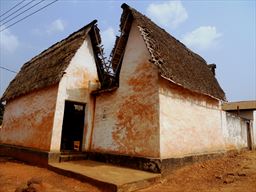
|
ASHANTI KINGDOM
The Akan people established city-states and kingdoms, most notably the influential Ashanti Kingdon, which had become the dominant force in the region by the 17th century. In our history, they were a powerful, militaristic people of West Africa and controlled large areas containing substantial deposits of gold. They ruled much of present-day Ghana before the Europeans arrived. The Ashantis are today the largest ethnic group in Ghana and continue to be a powerful force and one of Africa's rare matrilineal societies, where line of descent is traced through the female.
|
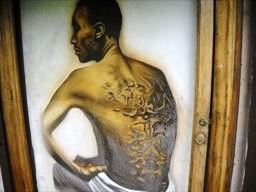 |
ARRIVAL of EUROPEANS
The first Europeans to arrive at the coast were the Portuguese in 1471. The British Gold Coast was formed in 1821 when the British government abolished the African Company of Merchants and seized privately held lands along the coast. Four wars, known as the Anglo-Ashanti Wars, were subsequently fought between the Ashanti and the British.
During the First Anglo-Ashanti War (1823–1831), the two groups fought because of a disagreement over an Ashanti chief and slavery. The three subsequent wars finally ended in 1900 with the Ashante being defeated.
The story of our great warrior Queen Yaa Asantewaa is known to all in Ghana, and she is commemorated in stories and legends across Ghana. Unfortunately though, the museum in her honor near Kumasi is no longer operational.
|
Historic Sites of the Slave Trade
Most historians agree that at least 12 million slaves were forcibly departed Africa between the 15th and 19th century, with about a 15% death rate on board ships. Besides the slaves who died on the Middle Passage itself, even more slaves probably died in the slave raids in Africa. The death toll from four centuries of the Atlantic slave trade is estimated at 10 million, with an estimated 6 million of these killed by other blacks in African tribal wars and raiding parties aimed at securing slaves.
Various sites have been maintained or developed for remembering this brutal history. Those nearer to the coast maintain the history of outsiders, as seen at our numerous Forts and Castles, while a couple near coastal sites were transition points between slave raiders of the north and the markets and shipment points on the coast.
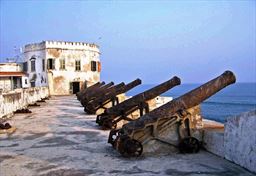 |
Colonial Forts & Castles
Ghana has the largest concentration of Colonial-era forts and castles of anyplace in Africa, with over 20 of these sites being fully accessible to visitors. The largest and most famous of these are the castles at Cape Coast and Elmina, about 3.5 hour drive west of Accra.
Visiting one of the large forts can be contrasted with a tour on one of the smaller forts. These smaller forts were not used extensively for the slave trade, but were often defensive outposts or engaged in various types of trade.
Read more about the forts and castles of Ghana.
|
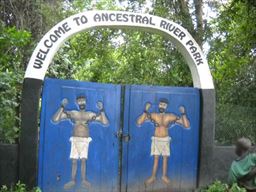 |
ASSIN MANSO
Apart from the numerous forts and castles along our shores, the most easily assessable site of significance is the former slave market and slave cemetery at Assin Manso. This is about an hour drive north of Cape Coast. Former slaves from the Americas, Samuel Carson from the USA and Crystal from Jamaica, were re-interred here in 1998.
In addition to the cemetery, the Slave River can be visited, where slaves brought from the north would receive a last bath. This is a sacred place of remembrance.
|
Further in the north of Ghana are sites from the days of slave trading which show the impact of the mostly indigenous slave raiders who participated in this human trade.
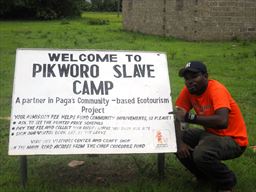 |
PAGA NANIA (Pikworo Slave Camp)
Three kilometers west of Paga is the village of Paga Nania. In this village are a slave transit camp and relics of the slave trade.
Nania originaly developed as a trading center for Hausa, Mossi and Zambrama traders. From the 16th century when slaves became a dominant item of trade, Nania became the first stopover and auction market for slaves captured in Mossi and surrounding lands. Slaves bought in Nania were usually sent for re-sale in the Salaga market.
What survives today is a rock outcrop that was used as an observation post by the raiders, water troughs formed in the rocks from which slaves drank, and grinding stones and "bowls" dug in the rocks, where slaves ground cereals for food.
|
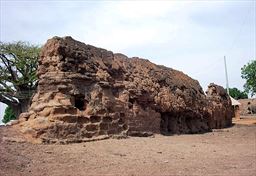 |
GWOLLU SLAVE DEFENCE WALL
70km north of Wa, Gwollu has another poignant reminder of the ancient slave routes that led through this region. The wall was built in the 19th century by Gwollu Koro Limann as a defence against slave traders for the local residents of that time. Portions of the slave defense wall have been preserved at a few places in town. The wall is of important historical value as it is one of very few remaining pieces of evidence of organized resistance to slave trade in the world.
Also at Gwollu are diverse attractions including crocodile ponds and a fertility and a bone-setting clinic. The most famous person from Gwollu has been the former president Hilla Limann, who served from 1979-1981 and has his tomb at Gwollu.
|
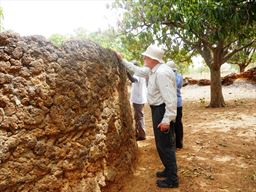 |
NALERIGU DEFENCE WALL
A less visible, but more easily accessible slave defence wall is the Nalerigu Defence Wall, located about 100 kilometres from Bolgatanga, in the Upper East region.
The remnants of this ancient wall in the Gambaga escarpment are said to have been built in the 16th century to protect inhabitants from slave raiders.
A visit to this site could be done while making a circuit around the scenic Gambaga Escarpment, visiting some of Ghana's most remote and unique villages and possibly a stop at one of Ghana's largest "witches camp", populated by women outcast from villages across Ghana for various "offences".
|
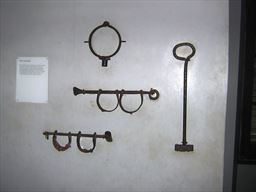 |
SLAVE MARKET at SALAGA
The famous Salaga slave market was an important commercial centre, linking Western Sudan and the African inland. It was a meeting point for Hausa traders from across West Africa to trade in slaves and other goods. Salaga is a rarely visited site due to its location on the Old Kumasi-Tamale road. While Salaga can be visited as an excursion from Tamale, a ferry crossing is required at Yeji if coming from Kumasi.
|
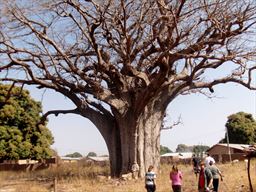 |
SAAKPULI
Saakpuli is 7km off the Tamale-Bolgatanga road at Disiga. Saakpuli was once a commercial hub that linked the north to the south where trade in slaves and kola nuts flourished. During the rain season access can be difficult.
The most prominent remnant of the slave trade is the ancient Baobab tree that once served as a slave market. While her trunk holds tales of horror from hundreds of years ago, this magnificent tree is truly amazing to behold.
|
Check this special Homecoming Tour that visits many of these sacred sites.
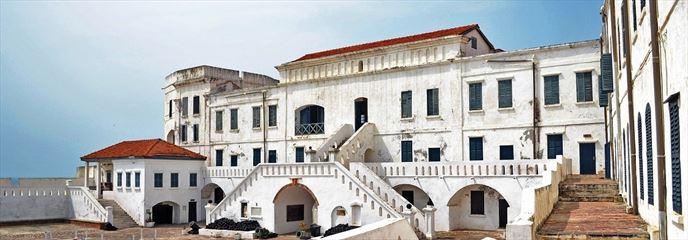
Back to Top










